| Home | fr | en |
Article No. 1
“The devil is in the details": 6 months of using the CANON EOS 1DX Mark II body camera, it is time to give a sentence.
4 november 2016
I can not help a bite of nostalgia when I read the numbers in burst mode, the CANON EOS 1N-RS body camera, argentic body camera, welded motor, semi-transparent fixed mirror, reached, thanks to this latest technology, already the speed of 10i/s in March 1995! For when an EOS 1DX mark III –RS? In 20 years we only did 4i/s better!!!">A quantum step was reached between the CANON EOS 1D Mark IV (2009, CMOS sensor: APS-H, 27.9x18.6) and CANON EOS 1DX (2012, CMOS sensor: full frame, 24x36), 4 years later, the challenge was to do better, with the release of the CANON EOS 1DX Mark II. Goal achieved but without a real quantum step (see table of characteristics below). How this new body camera was improved? A short answer: autofocus, exploitable sensitivities, dynamic range, video and burst.
Taking the last point: the burst. Depending on the card type, two modes.
We can observe that CANON had made an opening, in 2009, by proposing for the two card types of insertion: SD or CF. Upon requests of professionals whom, depending on their workplace, had difficulties obtaining the CF cards. Also, to reach certain burst speeds, the limiting point was the recording speed. In this area, CF cards were superior but so were their price, not to mention that over time, the SD card became the norm. Astonishing was the decision with the EOS 1DX, in 2012, of the exclusive withdrawal, of CANON, on CF cards, with double capacity, thus favoring speed and writing capacity at the expense of price and difficulties to access to these CF cards. By the way, note the quantum step from 12i/s to 14i/s with CF cards (Pro type III, 140MB/s, or 933x, 256GB at a price of CHF 358) with a buffer that can collect up to 40 images in a raw (versus 25 images for mark IV).
With the advent of the new generation of CF cards, type Fast 2.0 (recording speed of 515MB/s, or 3433x), CANON offers a second quantum step in the burst reaching 14i/s (2016), with auto-focus tracking, no limit in the amount of shooting, except the capacity of your Fast card, reaching a price of CHF 250 for 64 GB! (knowing that you also need a specific reader sold separately at CHF 80.-). On this point, with a USB 3.0 output, the box offers the possibility of bypassing the specific reader and this very efficiently, excellent choice of connectors, thank you.
Being positive, amateurs as well as professionals will appreciate the "no-limit" aspect during shooting! I can already see them smiling! We all know that prices drop when the object becomes more popular in sales, but for this format (CFast card), given that others competing brands haven’t adopted it, I allow me to keep some skepticism about some sales in prices of these CFast cards. In summary, if you did not stock up before leaving, expect to struggle!
I can not help a bite of nostalgia when I read the numbers in burst mode, the CANON EOS 1N-RS body camera, argentic body camera, welded motor, semi-transparent fixed mirror, reached, thanks to this latest technology, already the speed of 10i/s in March 1995! For when an EOS 1DX mark III –RS? In 20 years we only did 4i/s better!!!
I can not help a bite of nostalgia when I read the numbers in burst mode, the CANON EOS 1N-RS body camera, argentic body camera, welded motor, semi-transparent fixed mirror, reached, thanks to this latest technology, already the speed of 10i/s in March 1995! For when an EOS 1DX mark III –RS? In 20 years we only did 4i/s better!!!">A quantum step was reached between the CANON EOS 1D Mark IV (2009, CMOS sensor: APS-H, 27.9x18.6) and CANON EOS 1DX (2012, CMOS sensor: full frame, 24x36), 4 years later, the challenge was to do better, with the release of the CANON EOS 1DX Mark II. Goal achieved but without a real quantum step (see table of characteristics below). How this new body camera was improved? A short answer: autofocus, exploitable sensitivities, dynamic range, video and burst.
Taking the last point: the burst. Depending on the card type, two modes.
We can observe that CANON had made an opening, in 2009, by proposing for the two card types of insertion: SD or CF. Upon requests of professionals whom, depending on their workplace, had difficulties obtaining the CF cards. Also, to reach certain burst speeds, the limiting point was the recording speed. In this area, CF cards were superior but so were their price, not to mention that over time, the SD card became the norm. Astonishing was the decision with the EOS 1DX, in 2012, of the exclusive withdrawal, of CANON, on CF cards, with double capacity, thus favoring speed and writing capacity at the expense of price and difficulties to access to these CF cards. By the way, note the quantum step from 12i/s to 14i/s with CF cards (Pro type III, 140MB/s, or 933x, 256GB at a price of CHF 358) with a buffer that can collect up to 40 images in a raw (versus 25 images for mark IV).
With the advent of the new generation of CF cards, type Fast 2.0 (recording speed of 515MB/s, or 3433x), CANON offers a second quantum step in the burst reaching 14i/s (2016), with auto-focus tracking, no limit in the amount of shooting, except the capacity of your Fast card, reaching a price of CHF 250 for 64 GB! (knowing that you also need a specific reader sold separately at CHF 80.-). On this point, with a USB 3.0 output, the box offers the possibility of bypassing the specific reader and this very efficiently, excellent choice of connectors, thank you.
Being positive, amateurs as well as professionals will appreciate the "no-limit" aspect during shooting! I can already see them smiling! We all know that prices drop when the object becomes more popular in sales, but for this format (CFast card), given that others competing brands haven’t adopted it, I allow me to keep some skepticism about some sales in prices of these CFast cards. In summary, if you did not stock up before leaving, expect to struggle!
I can not help a bite of nostalgia when I read the numbers in burst mode, the CANON EOS 1N-RS body camera, argentic body camera, welded motor, semi-transparent fixed mirror, reached, thanks to this latest technology, already the speed of 10i/s in March 1995! For when an EOS 1DX mark III –RS? In 20 years we only did 4i/s better!!!
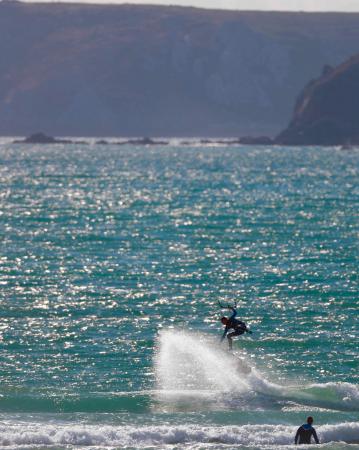 | 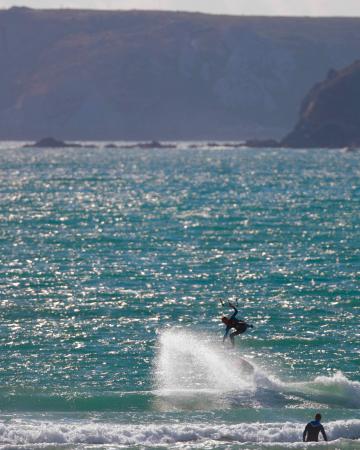 | 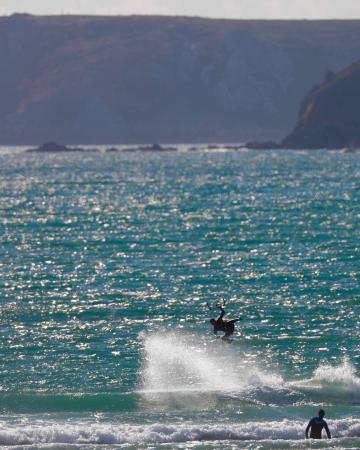 | 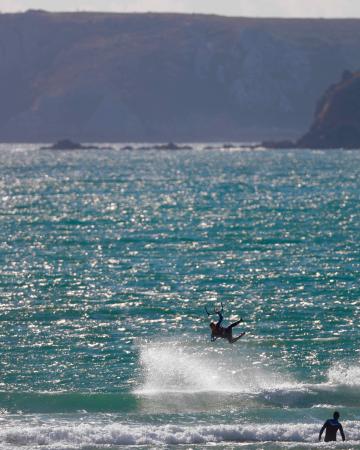 | 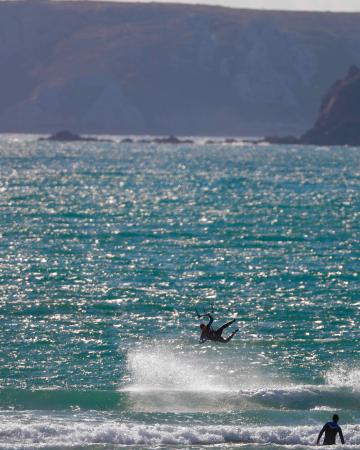 |
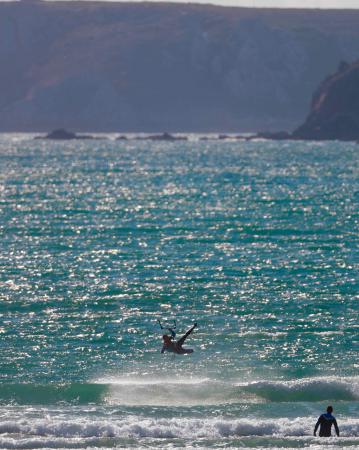 | 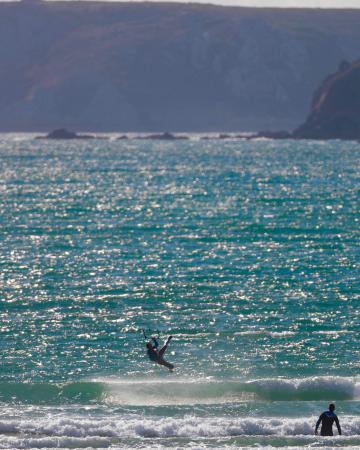 | 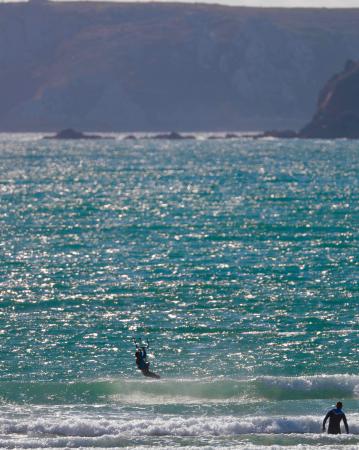 | 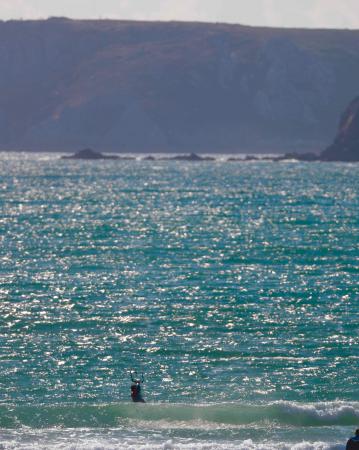 |
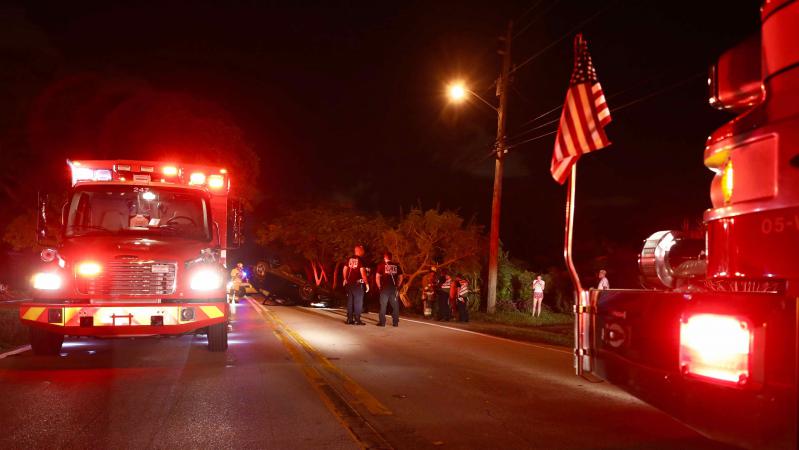 On the video side, I will be brief; first of all because I am a photographer and not a videographer, finally because in this field I am reaching the limits of my skills. This body camera announces a video at 4K (4096x2160 px), the promotional film shot with the kingfisher bird is just amazing and makes everyone dream. It shows how fast, reliable and flexible autofocus is (dual pixel system has been improved). On the short test carried out, I appreciated the possibility of making the point with the finger directly on the LCD screen (touch screen in video mode!). Same for the recognition of the faces during for the follow-up focus of the characters in action. Technically, I am still intrigued by the format limitation (no UHD 16/9) and the choice of MJPEG. The non-possibility of filming directly in 16/9 imposes a decision before the shooting (COKIN filter for example) or a post-treatment and therefore a delicacy of the framing (anticipation or nervous crisis).
On the video side, I will be brief; first of all because I am a photographer and not a videographer, finally because in this field I am reaching the limits of my skills. This body camera announces a video at 4K (4096x2160 px), the promotional film shot with the kingfisher bird is just amazing and makes everyone dream. It shows how fast, reliable and flexible autofocus is (dual pixel system has been improved). On the short test carried out, I appreciated the possibility of making the point with the finger directly on the LCD screen (touch screen in video mode!). Same for the recognition of the faces during for the follow-up focus of the characters in action. Technically, I am still intrigued by the format limitation (no UHD 16/9) and the choice of MJPEG. The non-possibility of filming directly in 16/9 imposes a decision before the shooting (COKIN filter for example) or a post-treatment and therefore a delicacy of the framing (anticipation or nervous crisis).Dynamic range increase: in everyday photography, even if we do not notice it, it is necessary to be in borderline or even extreme cases to have a utility, for example: architecture at night with various lighting. There, noise management is essential; I remember having to stop shooting during a concert with my CANON EOS 7D at ISO 800 when I could continue with my CANON EOS 1D-Mark IV at ISO 3’200, without noticing noise. With the CANON EOS 1DX Mark II, you push it and therefore you can still be active (where as the others have to stop) up to 6’400 (sure), even 12’800 ISO! I also seem to observe progress in image processing at low ISO. Last point was also shared in Darth’s Blog (http://blog.darth.ch/2016/10/04/test-terrain-complet-canon-eos-1dx-mark-ii/). On this point, like my previous blogger, I have no quantitative measure to demonstrate but more qualitative and subjective. This point may be biased by the fact that we find what we are looking for. Since then, subjective feeling made objective by (quantitative) tests in magazines: Image Hunter and Photo Answers.
As you will have noticed, this chapter is not without talking about ISO. There is a race for ISO, let's not face it. What is the point of breaking records if the images obtained are only usable for very confidential uses like paparazzi at night or military in tactical field at night? Not much, except that who can do more can do minus! Indeed, being able to take an image at very high ISO shows that we control the noise at ISO acceptable for the vast majority of photographers (between 3200 and 12800 ISO). Noise? It is the presence of parasitic pixels in an image in a random way and which prevents black from being a deep black, moreover one loses sharpness in the details in the event of low light or long exposure (https: // fr.wikipedia.org/wiki/Bruit_numérique). CANON, here is one of the leaders in the control of digital noise at important ISO which will delight the communities of sports, wildlife, events and astrological photographers. My personal use is not to exceed ISO 12’800, even if this is field use dependent choice. Technically, by limiting the pixel quantity (limitation to 20MP, some competitors are at 26MP for a 24x36 sensor), CANON has significantly improved image processing, whether at dynamic range or on the quality of the renderings at low light and at high ISO. Well done for the strategic choice and for not giving in to the pixel sirens!
On the video side, I will be brief; first of all because I am a photographer and not a videographer, finally because in this field I am reaching the limits of my skills. This body camera announces a video at 4K (4096x2160 px), the promotional film shot with the kingfisher bird is just amazing and makes everyone dream. It shows how fast, reliable and flexible autofocus is (dual pixel system has been improved). On the short test carried out, I appreciated the possibility of making the point with the finger directly on the LCD screen (touch screen in video mode!). Same for the recognition of the faces during for the follow-up focus of the characters in action. Technically, I am still intrigued by the format limitation (no UHD 16/9) and the choice of MJPEG. The non-possibility of filming directly in 16/9 imposes a decision before the shooting (COKIN filter for example) or a post-treatment and therefore a delicacy of the framing (anticipation or nervous crisis).
Dynamic range increase: in everyday photography, even if we do not notice it, it is necessary to be in borderline or even extreme cases to have a utility, for example: architecture at night with various lighting. There, noise management is essential; I remember having to stop shooting during a concert with my CANON EOS 7D at ISO 800 when I could continue with my CANON EOS 1D-Mark IV at ISO 3’200, without noticing noise. With the CANON EOS 1DX Mark II, you push it and therefore you can still be active (where as the others have to stop) up to 6’400 (sure), even 12’800 ISO! I also seem to observe progress in image processing at low ISO. Last point was also shared in Darth’s Blog (http://blog.darth.ch/2016/10/04/test-terrain-complet-canon-eos-1dx-mark-ii/). On this point, like my previous blogger, I have no quantitative measure to demonstrate but more qualitative and subjective. This point may be biased by the fact that we find what we are looking for. Since then, subjective feeling made objective by (quantitative) tests in magazines: Image Hunter and Photo Answers.
As you will have noticed, this chapter is not without talking about ISO. There is a race for ISO, let's not face it. What is the point of breaking records if the images obtained are only usable for very confidential uses like paparazzi at night or military in tactical field at night? Not much, except that who can do more can do minus! Indeed, being able to take an image at very high ISO shows that we control the noise at ISO acceptable for the vast majority of photographers (between 3200 and 12800 ISO). Noise? It is the presence of parasitic pixels in an image in a random way and which prevents black from being a deep black, moreover one loses sharpness in the details in the event of low light or long exposure (https: // fr.wikipedia.org/wiki/Bruit_numérique). CANON, here is one of the leaders in the control of digital noise at important ISO which will delight the communities of sports, wildlife, events and astrological photographers. My personal use is not to exceed ISO 12’800, even if this is field use dependent choice. Technically, by limiting the pixel quantity (limitation to 20MP, some competitors are at 26MP for a 24x36 sensor), CANON has significantly improved image processing, whether at dynamic range or on the quality of the renderings at low light and at high ISO. Well done for the strategic choice and for not giving in to the pixel sirens!

Dynamic range increase: in everyday photography, even if we do not notice it, it is necessary to be in borderline or even extreme cases to have a utility, for example: architecture at night with various lighting. There, noise management is essential; I remember having to stop shooting during a concert with my CANON EOS 7D at ISO 800 when I could continue with my CANON EOS 1D-Mark IV at ISO 3’200, without noticing noise. With the CANON EOS 1DX Mark II, you push it and therefore you can still be active (where as the others have to stop) up to 6’400 (sure), even 12’800 ISO! I also seem to observe progress in image processing at low ISO. Last point was also shared in Darth’s Blog (http://blog.darth.ch/2016/10/04/test-terrain-complet-canon-eos-1dx-mark-ii/). On this point, like my previous blogger, I have no quantitative measure to demonstrate but more qualitative and subjective. This point may be biased by the fact that we find what we are looking for. Since then, subjective feeling made objective by (quantitative) tests in magazines: Image Hunter and Photo Answers.
As you will have noticed, this chapter is not without talking about ISO. There is a race for ISO, let's not face it. What is the point of breaking records if the images obtained are only usable for very confidential uses like paparazzi at night or military in tactical field at night? Not much, except that who can do more can do minus! Indeed, being able to take an image at very high ISO shows that we control the noise at ISO acceptable for the vast majority of photographers (between 3200 and 12800 ISO). Noise? It is the presence of parasitic pixels in an image in a random way and which prevents black from being a deep black, moreover one loses sharpness in the details in the event of low light or long exposure (https: // fr.wikipedia.org/wiki/Bruit_numérique). CANON, here is one of the leaders in the control of digital noise at important ISO which will delight the communities of sports, wildlife, events and astrological photographers. My personal use is not to exceed ISO 12’800, even if this is field use dependent choice. Technically, by limiting the pixel quantity (limitation to 20MP, some competitors are at 26MP for a 24x36 sensor), CANON has significantly improved image processing, whether at dynamic range or on the quality of the renderings at low light and at high ISO. Well done for the strategic choice and for not giving in to the pixel sirens!

 Last but not least: autofocus. CANON did even better! No improvement when the number of collimators, 61, but they cover a larger area, more the central collimators are more sensitive (-3IL). Also, the lateral collimators are, this time, all sensitive up to f8. Fans with dimly lit objectives (opening at F4.5 or more) will be delighted, but all animal photographers will be even more so the side sights are active even when using a 2x magnifying lense! Another improvement, is the on-board programming AF system with the very efficient “Ai Servo III +” mode, for example with AF tracking of a helmet, in particular, among other bikers in a bend! These pictures are difficult to do, getting the AF to follow and keeping the framing of: it's magic! New perspectives are opening up for us! Finally, the AF performs better in the shadows. Through the menu, you will find pre-programmed possibilities offering a wide range of field uses. To make a long story short: it’s a war machine!
Last but not least: autofocus. CANON did even better! No improvement when the number of collimators, 61, but they cover a larger area, more the central collimators are more sensitive (-3IL). Also, the lateral collimators are, this time, all sensitive up to f8. Fans with dimly lit objectives (opening at F4.5 or more) will be delighted, but all animal photographers will be even more so the side sights are active even when using a 2x magnifying lense! Another improvement, is the on-board programming AF system with the very efficient “Ai Servo III +” mode, for example with AF tracking of a helmet, in particular, among other bikers in a bend! These pictures are difficult to do, getting the AF to follow and keeping the framing of: it's magic! New perspectives are opening up for us! Finally, the AF performs better in the shadows. Through the menu, you will find pre-programmed possibilities offering a wide range of field uses. To make a long story short: it’s a war machine!Last but not least: autofocus. CANON did even better! No improvement when the number of collimators, 61, but they cover a larger area, more the central collimators are more sensitive (-3IL). Also, the lateral collimators are, this time, all sensitive up to f8. Fans with dimly lit objectives (opening at F4.5 or more) will be delighted, but all animal photographers will be even more so the side sights are active even when using a 2x magnifying lense! Another improvement, is the on-board programming AF system with the very efficient “Ai Servo III +” mode, for example with AF tracking of a helmet, in particular, among other bikers in a bend! These pictures are difficult to do, getting the AF to follow and keeping the framing of: it's magic! New perspectives are opening up for us! Finally, the AF performs better in the shadows. Through the menu, you will find pre-programmed possibilities offering a wide range of field uses. To make a long story short: it’s a war machine!


